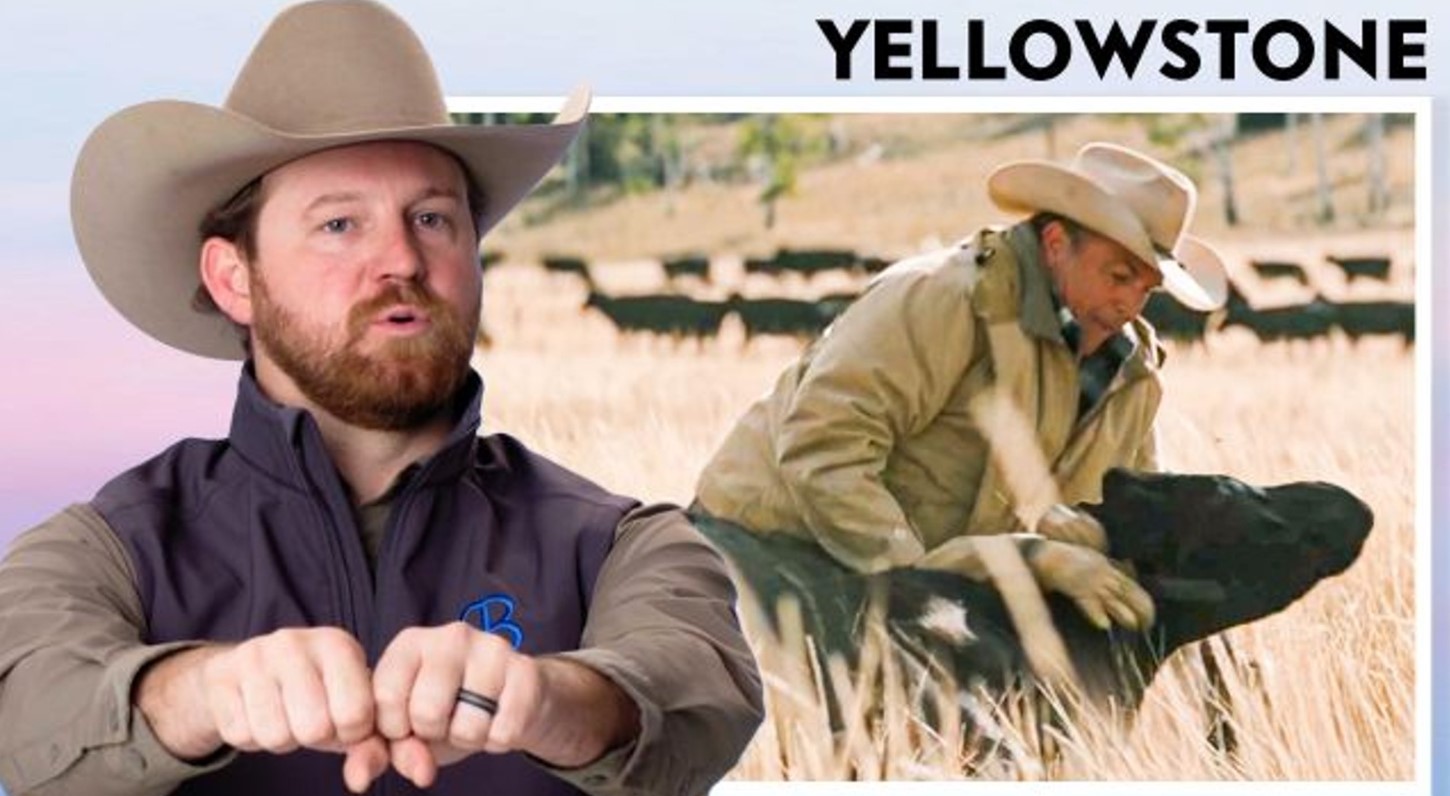Yellowstone ‘s calf birthing scene earns a mixed review from a real-life cowboy, who points out one glaring flaw. Created by Taylor Sheridan, the hit Paramount Network series premiered in 2018 with a story that follows Kevin Costner’s John Dutton as he protects his Montana ranch from outside forces. Though Yellowstone featured some major conflicts and action sequences throughout its five-season run, it also took the time to show routine aspects of ranch life, including one moment in the season 1 premiere in which Costner’s Dutton family patriarch helps to deliver a calf during an emergency.
In a recent video for Vanity Fair, professional Texas rancher Tucker Brown points out that Yellowstone’s calf delivery scene features a mix of accurate and inaccurate elements. Though the scene correctly portrays the urgency that comes with a calf in breech, Brown takes issue with the calf promptly getting to its feet and running away after being born, which he says would never happen. The real-life cowboy also takes the time to praise Yellowstone as a whole for making more people interested in the ranch way of life. Check out Brown’s analysis below:
“They did a pretty good job of showing the urgency that you have when something is going wrong, the stress that it can cause, and some bad things that can happen. Cowboys and ranchers are needed, ‘cause that is a situation that can happen, and kind of a life or death situation for the calf and the cow. Really the only thing that they may have missed, or kind of moved to Hollywood, right, was that when a calf is born it can’t get up and run away. And it looks like a baby giraffe, it can’t really stand, its legs are really wobbly.

“I mean, normally it takes a calf 30 minutes to be able to be able to get up. The mama turns around and licks it dry and that’s kind of their bonding moment. And on this they mentioned that it was breech. So normally, a calf comes out two feet first and then the nose, but if you see anything besides two feet, something’s wrong. And it looks like that’s what happened on that scene.
“In a perfect world, and what happens on 98% of our calf births, is that no one’s there, there’s no stress involved. It’s just her, the calf, and nature. The ones we have to watch would be what we call a heifer. A heifer is a female bovine that has not had a baby yet.
“And so when it’s their first baby, we’re a little different than most ranches. We watch them and check ‘em every four hours. So through the day, through the night, we rotate times. They’ll show signs of labor, that’ll start with a kink in their tail, and that’s when we know that they’re starting labor. We’ll give ‘em two hours and then there should be a water bag. And then we’ll give ‘em two more hours and there should be two feet. We’ll give ‘em two more hours and there should be a calf on the ground. […]
“They did a pretty good job of making it look super real, besides the part where it gets up and runs away, ‘cause I would be quite startled if that were to happen to me. I’m kind of riding the coattails of Yellowstone as I’m doing it. In our way of life, we’ve wanted people to know more about it. And now, more people are interested in the cowboy way of life than ever in my lifetime.”
What This Means For Yellowstone
The Inaccuracies Didn’t Hurt The Show

Yellowstone has been generally well-received throughout its run, despite some of the behind-the-scenes issues involving Costner. Season 1 got off to a somewhat rocky start on Rotten Tomatoes with only a 58% critics’ score, but later seasons righted the ship, with scores being far more positive. It was also a major viewership hit for Paramount, which then led to spinoffs like 1883 and 1923, the latter of which is now nearing its season 2 finale. There are also upcoming spinoffs like The Madison, and reported others focused on Rip (Cole Hauser), Beth (Kelly Reilly), and Kayce (Luke Grimes).
The fact that Yellowstone takes some artistic liberties with aspects of ranch life doesn’t seem to have hurt the series with audiences, and it’s unlikely to tarnish the show’s reputation. For one, more casual viewers probably wouldn’t know any better, and plus the series also leaned into certain soap opera elements, mining exaggerated situations for drama. Though there are realistic elements included in Yellowstone, as revealed by the analysis above, it’s also a TV show designed to entertain audiences.
Our Take On Yellowstone’s Calf Birth Scene
Why It’s An Important Moment In The Opening Episode
The calf birth scene in the season 1 premiere plays an important role in setting up the show’s tone and setting, as well as the central figure in the Yellowstone cast of characters. It effectively helps to convey the kinds of intense situations that ranchers encounter in their everyday lives while giving viewers a taste of what real ranch work looks like. It also reveals some key information about Costner’s John Dutton, namely that he isn’t afraid to get his hands dirty and do the grunt work, despite having a powerful operation built around him.
Though the scene could still have accomplished this by more realistically showing the calf lying on the ground, it’s obviously a far more emotionally satisfying end to the scene to see the calf galloping away in the Montana sun, its life saved. This scene represents the dichotomy of ranch life that is presented in Yellowstone, with moments of stress and danger contrasted against the beauty of the landscape and a romanticized notion of cowboy life.
